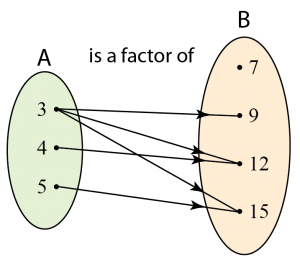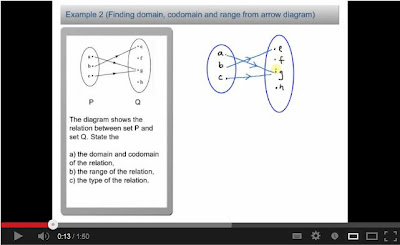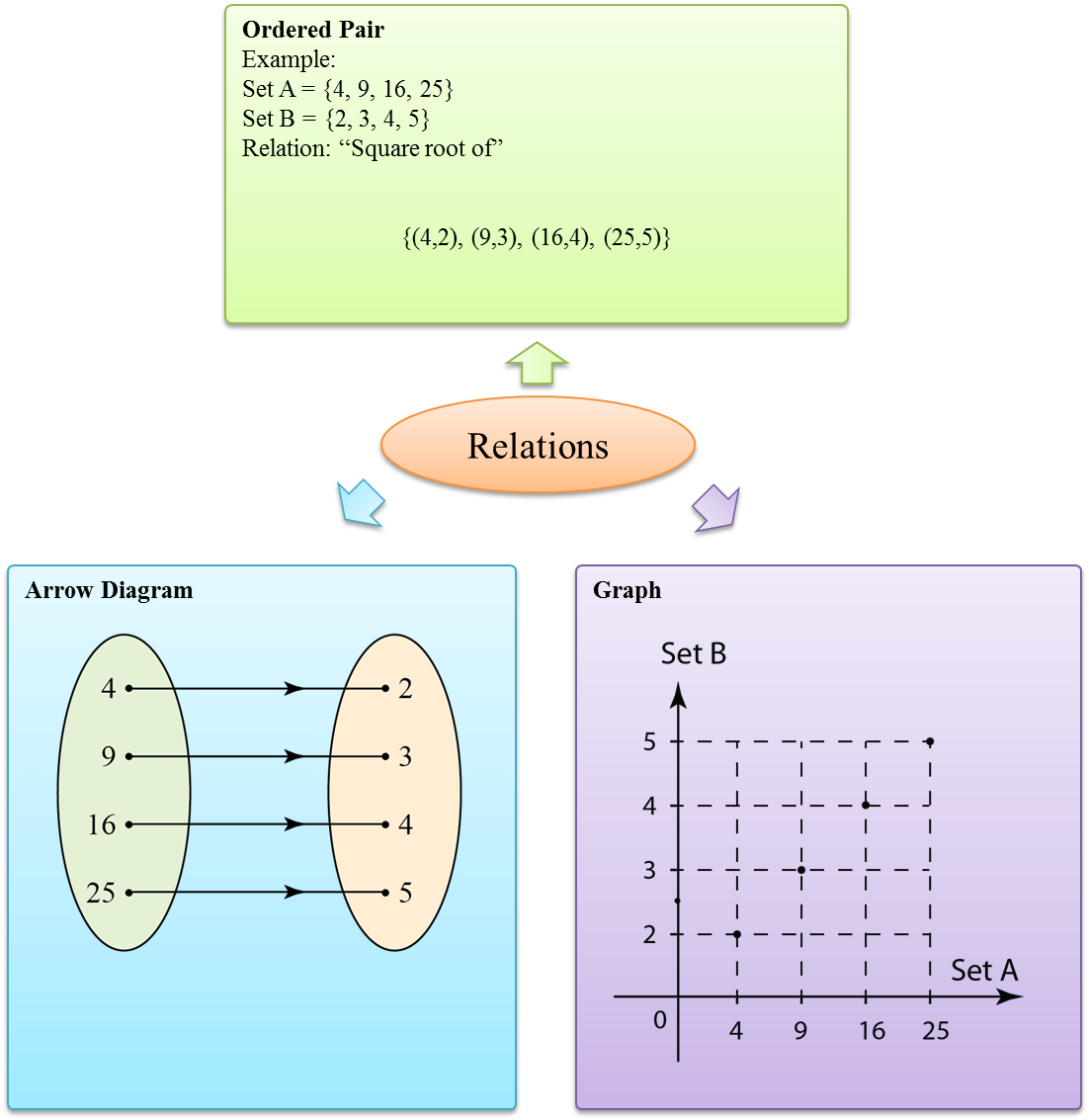(B) Domain, Range, Objects and Images of a Function
Example:

The arrow diagram above represents the function
f :
x → 2
x2 – 5. State
(a) the domain,
(b) the range,
(c) the image of –2,
(d) the objects of
(i) –3,
(ii) –5.
Solution:
(a) Domain = {
–2, –1, 0, 1, 2}.
(b) Range = {
–5, –3, 3}.
(c) The image of –2 is
3.
(d) (i) The objects of –3 are
1 and –1.
(d) (ii) The objects of –5 is
0.
(C) Absolute Value Functions
1. Symbol
| | is read as ‘
the modulus’ of a number. In general, the modulus of
x, that is
| x |, is defined as
|x|={x if x≥0−x if x<0|x|={x if x≥0−x if x<0
2. In other words, modulus of a number always positive.
3. The absolute value function
| f(
x)
| is defined by
|f(x)|={f(x) if f(x)≥0−f(x) if f(x)<0|f(x)|={f(x) if f(x)≥0−f(x) if f(x)<0
Example:
Given function f : x → |x + 2|.
(a) Find the image of –4, –3, 0 and 2.
(b) Sketch the graph of f (x) for the domain –4 ≤ x ≤ 2.
Hence, state the range of values of f (x) based on the given domain.
Solution:
(a)
Given
f (
x) =
|x + 2
|
Image of –4 is
f(–4) =
| –4 + 2
| = | –2
| = 2
Image of –3 is
f(–3) =
| –3 + 2
| = | –1
| = 1
Image of 0 is
f(0) =
| 0 + 2
| = | 2
| = 2
Image of 2 is
f(2) =
| 2 + 2
| = | 4
| = 4
(b)
From (a),
f(–4)
= 2
f(–3)
= 1
f(0)
= 2
f(2)
= 4
Determine the point where the graph touches the
x-axis.
At
x-axis
, f (
x) = 0
|
x + 2| = 0
x + 2 = 0
x = –2

Therefore, range of values of
f (
x) is
0 ≤ f (x) ≤ 4.














